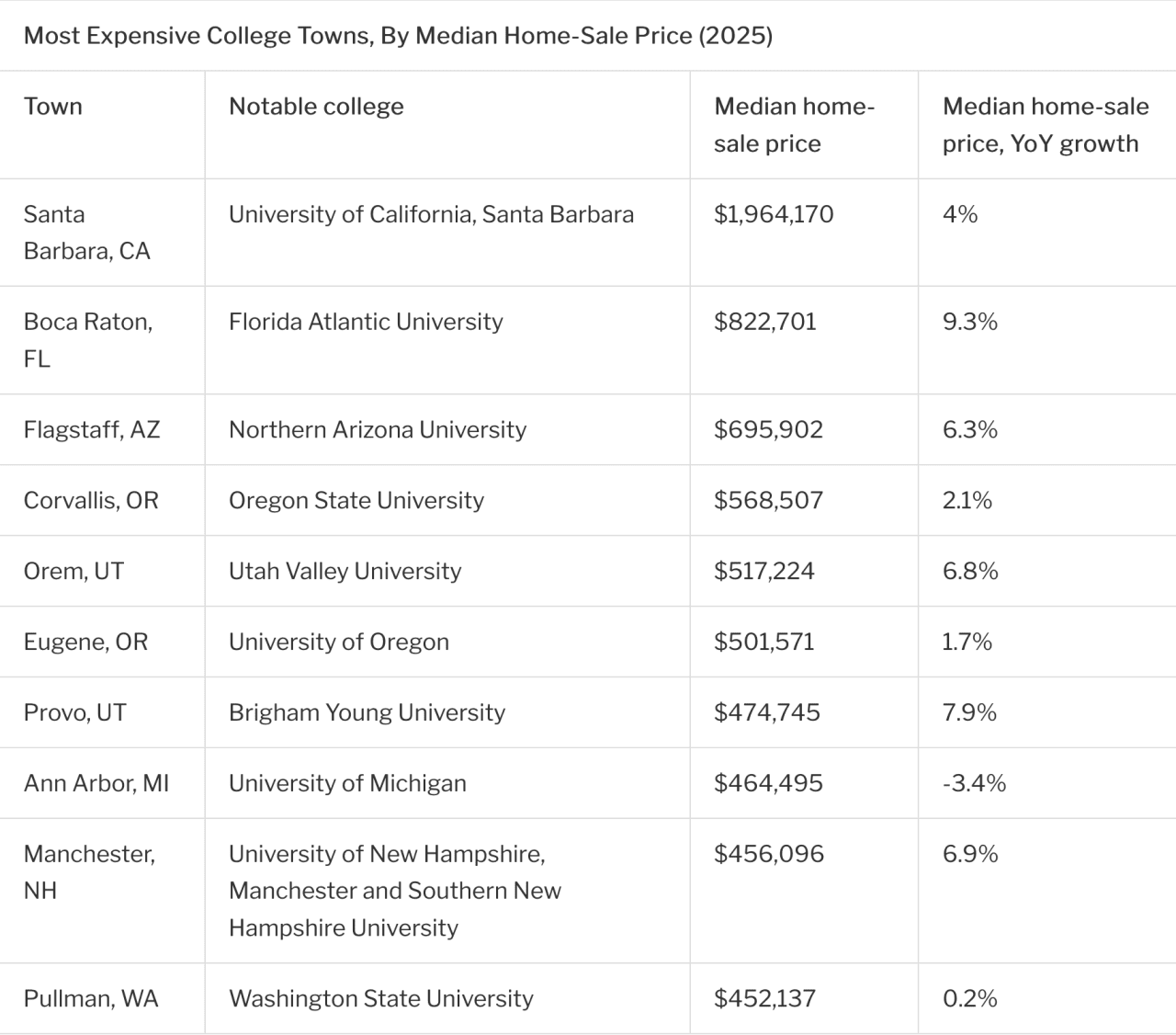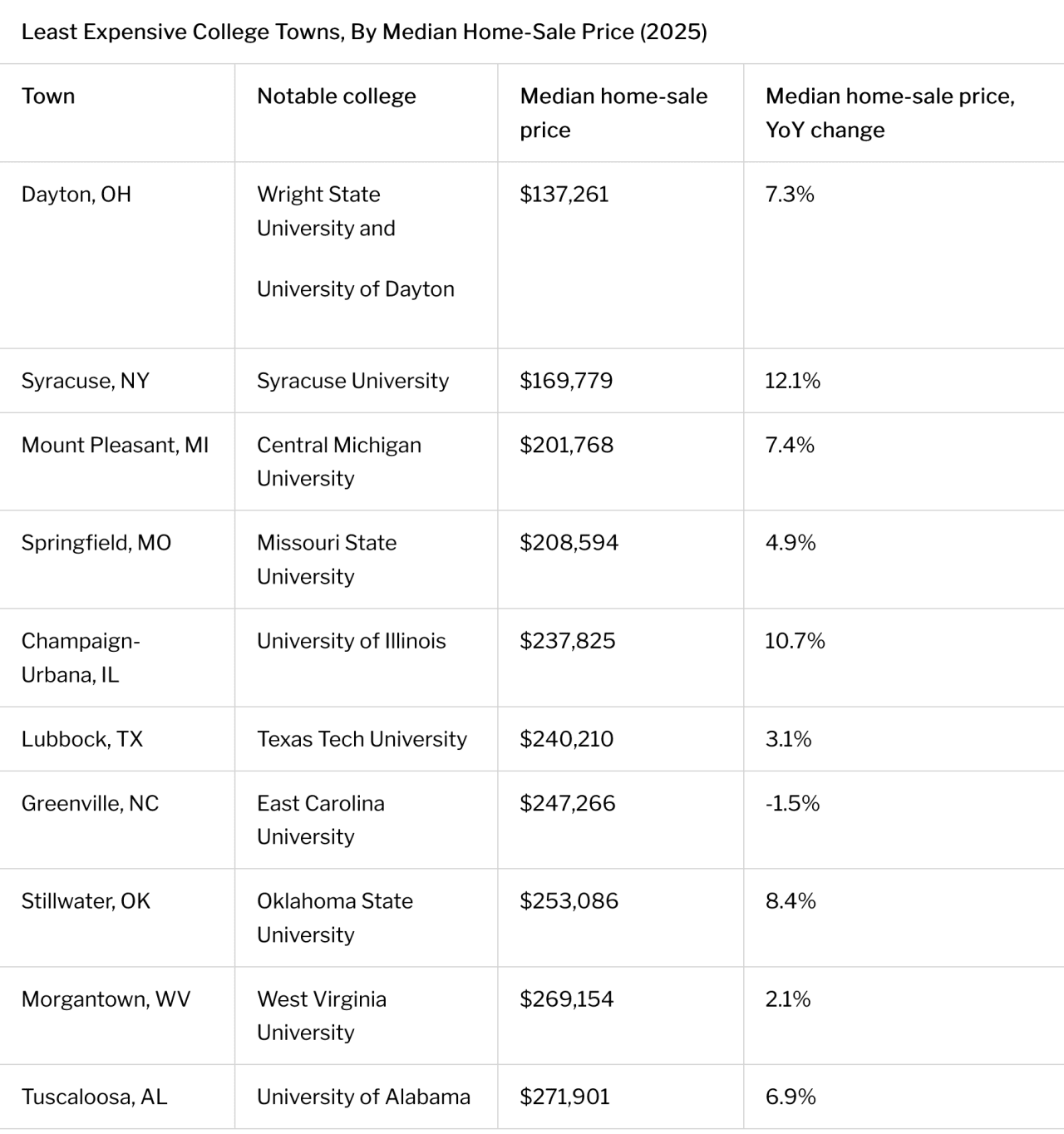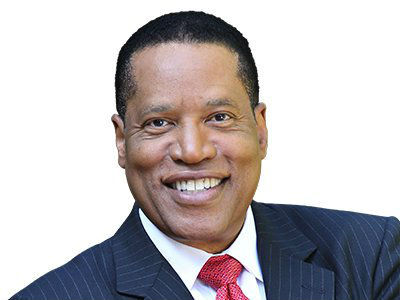The 10 most (and least) expensive college towns in the US
Lifestyle

Audio By Carbonatix
2:00 PM on Tuesday, September 30
By Jamie Forbes for Redfin Real Estate, Stacker
The 10 most (and least) expensive college towns in the US
As students head back to campus this fall, many are returning to college towns where the cost of living has climbed to staggering heights.
“Home prices — and, by extension, rent — in many college towns have climbed so high they’re increasingly out of reach for students, faculty, and staff,” noted Daryl Fairweather, Redfin Chief Economist. “As home-sale prices rise nationwide, they push up rents because landlords often pass the cost along to their tenants. Paired with limited rental supply in rent-heavy towns, costs can climb quickly.”
The result? Rent is now the largest expense for many of today’s college students — sometimes exceeding tuition. In a few markets, buying a home is actually cheaper than renting. Living on campus can be even more expensive.
While some students live on campus or rely on family housing, the housing market still shapes a city’s cost of living and may influence where people choose to attend college.
To highlight where costs are highest and lowest, Redfin Real Estate found the most and least expensive college towns in the U.S., ranked by their median sale price.
The most expensive college towns in the U.S.

Santa Barbara tops the list as the most expensive college town in the country — by a wide margin. It’s followed by Boca Raton; both towns sit on pristine coastlines and offer top-tier universities and amenities, which help push real estate prices through the roof. While incomes in these cities are relatively high and climbing, many residents still struggle to afford to live there.
The remaining expensive college towns are spread across the country and generally in appealing or iconic locales, like the fertile Palouse region of Washington or the mountain country in northern Arizona.
Housing investors can also play a role in college towns. Sometimes parents will act as investors, buying homes near the university for themselves or their children — and even renting space to their child’s friends.
The least expensive college towns in the U.S.

Dayton is the least expensive college town in the U.S., with a median sale price less than a third of the national average. Two more Rust Belt cities, Syracuse and Mount Pleasant, are next. Even including non-college towns, Dayton and Syracuse are among the cheapest places to buy a house in the country.
All of the cheapest college towns have sale and rent prices well under the national rate. However, even though costs are low, local incomes are as well, meaning affordability is still often strained.
Final thoughts
A college education is pricey and getting pricier, and high housing costs make it even harder to afford. Whether on- or off-campus, the price of housing can make college stressful or even unattainable.
College students looking for off-campus housing on a tight budget should speak with their university, check local market trends, and explore alternatives like roommates or living with family. Redfin has an in-depth guide to help people through the process.
As the education and housing landscapes continue to shift, keeping an eye on local housing trends can help you make informed choices about where to learn, live, and work.
Methodology
Based on an original Redfin report, which analyzed data for 240 college towns across the nation. To be considered a “college town”, at least 10% of the city’s population must be students at a four-year accredited university, and it must be at least 30 miles away from a metro area with a population greater than 1 million. Only the top 50 cities by student population with at least 100 home sales in 2025 were included.
Housing data is a weighted average from January to July 2025. Income data comes from the U.S. Census Bureau 2024 ACS 1-year estimate. Tuition data comes from College Board and assumes average financial aid. For information about housing markets in additional college towns, read this.
This story was produced by Redfin Real Estate and reviewed and distributed by Stacker.

























